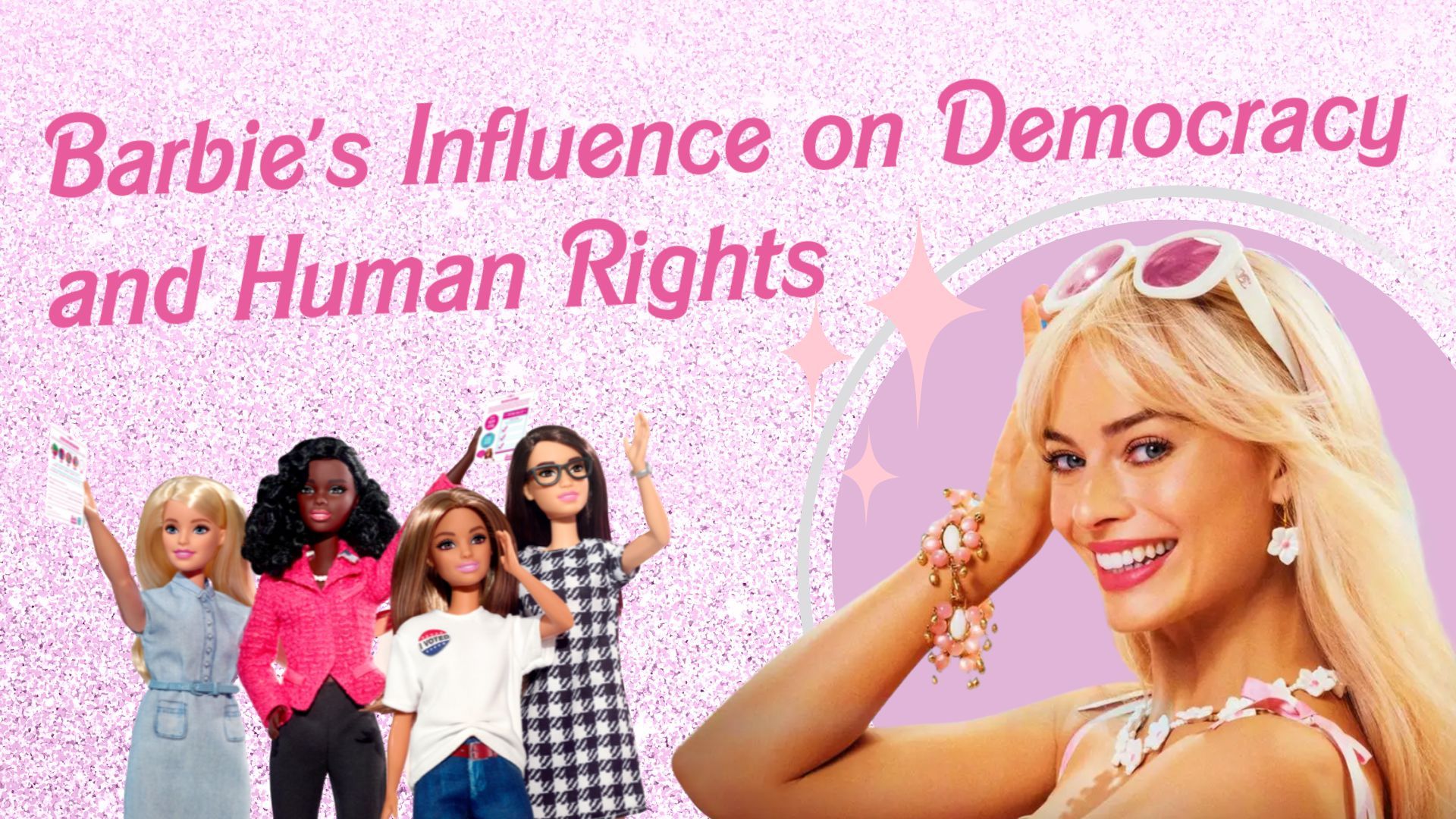Barbie Doll's Multi-Faceted Influence on Democracy and Human Rights: A Catalyst for Societal Transformation

The film "Barbie," directed by Greta Gerwig, became the film of the year, breaking many records and provoking discussions on feminism, patriarchy, human rights, and much more. This movie tells us a story of growing up and saying goodbye to our childhood but also shows us a distortion of the real world in which we live. And it’s not just about a doll, there was much more behind the pretty face.
Love her or hate her, Barbie is a cultural artifact, if not an icon. Many perceive a doll as a beautiful but empty item, which can often cause harm with its unrealistic parameters. However, over the years, the Barbie doll has played an unexpected role in influencing democracy and human rights, particularly regarding feminism, voting access, and dismantling stereotypes. In this article, we delve into the profound ways the Barbie doll has contributed to these societal changes, while also highlighting the challenges and obstacles she has faced.
Feminism and Challenging Stereotypes
Ruth Handler, the visionary behind Barbie, drew her inspiration from observing her children engage in imaginative play. A notable contrast caught her attention: her son's action figures seamlessly morphed into various roles like doctors and firefighters, while her daughter's dolls, predominantly depicting infants and young ones, constrained her imagination to a solitary role as a mother. The shifting landscape of feminism during the 1960s and 1970s sparked a burgeoning demand for more inclusive and empowering portrayals of women. In response, Ruth aspired to offer her daughter and all young girls the chance to envision a spectrum of aspirations beyond motherhood. This ambition led her to introduce an older doll, the original Barbie, opening doors to a kaleidoscope of life's potential trajectories.
In response to these societal changes, Mattel started introducing Barbie dolls in various professions, ranging from astronauts to scientists and firefighters. These changes promoted the idea that women could excel in fields traditionally dominated by men and that their roles were not limited to domesticity. This representation inspired young girls to dream big and encouraged a broader perspective on gender equality and women's rights.
Human Rights and Access to Voting
Barbie has emerged as an unexpected but significant vehicle for encouraging young minds to embrace the principles of democracy and engage in the civic voting process.
Barbie's diversity in terms of cultures, backgrounds, and professions goes beyond aesthetics; it allows children to explore and appreciate the richness of varied perspectives. This diversity aligns with a foundational tenet of democratic societies: recognizing and including many viewpoints. By exposing children to dolls that reflect a wide array of identities and experiences, Barbie contributes to nurturing an early understanding of the importance of respecting and valuing diversity, an essential aspect of democratic coexistence.
One of the most noteworthy ways Barbie influences human rights is by acting as a symbol of empowerment. This empowerment is not confined to individual growth but extends to promoting the importance of individual rights within the larger framework of society. Central to these rights is participation in the political process, including the fundamental right to vote. Barbie's representation of women in leadership roles, such as presidents and prime ministers, is a powerful visual narrative that challenges traditional gender roles and expectations. This representation is significant for shaping young minds' perceptions of what is possible for their own futures, irrespective of gender.
In a world where inequalities and barriers still exist, Barbie's depiction of women in positions of power helps dismantle stereotypes and fosters an environment where young girls and boys can envision themselves as leaders, decision-makers, and active participants in shaping their communities and nations. By showcasing women in roles traditionally dominated by men, Barbie contributes to the ongoing paradigm shift that advocates for equal opportunities and representation for all.
Obstacles and Stereotypes
The topic of Barbie's impact goes beyond her surface influence and delves into the complexities of obstacles and stereotypes that have marked her journey. While Barbie has undeniably played a transformative role in challenging societal norms and advancing human rights, she has yet to navigate her path without encountering criticism and facing obstacles that demand deeper exploration.
One of the most substantial critiques aimed at Barbie revolves around her portrayal of unrealistic body proportions. It has been argued that the doll's exaggerated dimensions have perpetuated unattainable beauty ideals, inadvertently contributing to negative body image issues among young girls. This sparks a significant debate about the delicate interplay between empowerment and the inadvertent reinforcement of detrimental stereotypes. The conflict lies in whether portraying an idealized figure and lifestyle empowers girls to envision broader horizons, or inadvertently confines them to a limited scope of possibilities.
As the world has progressed, so has the dialogue surrounding Barbie's influence. The discussion has evolved from solely challenging gender norms to encompass wider conversations about representation and inclusivity. Acknowledging the criticism it faced, Mattel, the company behind Barbie, has demonstrated responsiveness by diversifying its offerings. Introducing dolls with various body types, disabilities, skin tones, and hairstyles, which signals a conscious effort to embrace a more comprehensive spectrum of beauty and self-worth. This strategic shift aims to redefine the brand's legacy and address concerns arising from changing societal attitudes.
Conclusion
Despite its beginnings as a mere fashion doll, Barbie has become a cultural icon influencing democracy and human rights. Its journey from reinforcing traditional gender roles to promoting diversity, empowerment, and equal rights showcases the power of a seemingly simple toy to ignite profound societal changes. Through its diverse representations, Barbie continues to inspire generations of children to challenge stereotypes, pursue their dreams, and actively participate in democratic processes. However, ongoing efforts are needed to address critiques and ensure that the positive impact of the Barbie doll on democracy and human rights remains unwavering.

